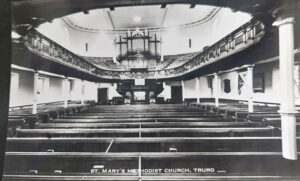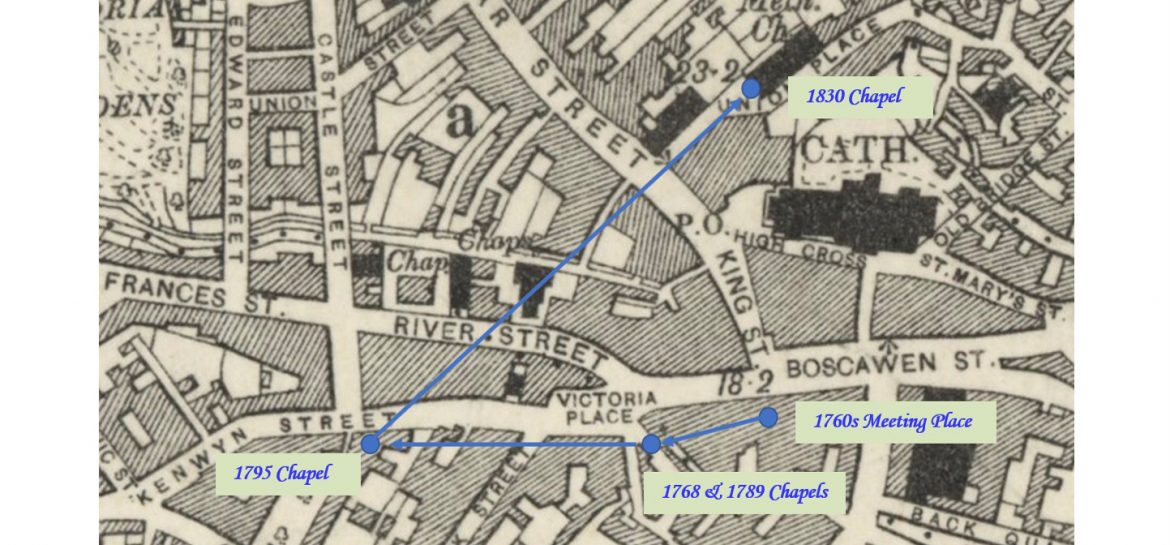
This profile of St Mary Clement Methodist Chapel, and previous chapels, has been compiled by Tony Mansell. The lead image shows the sequence of previous Wesleyan chapels.
1761: The Reverend Samuel Walker, Curate of St Mary’s Church, died. Until then, John Wesley had refused to set up a Wesleyan Society in Truro in opposition to him.
Truro Wesleyan Society formed with Cottage Prayer Meetings under “prayer leaders” and open-air meetings including on the site of the old Truro Castle.
Wesley preached in front of the Coinage Hall.
The first Wesleyan Meeting Place is thought to have been in an ope in Boscawen Street.
1767: The society comprised 21 members.
Chapels in the vicinity of West Bridge and Walsingham Place
1768: The society moved to a “wooden chapel near West Bridge”. It was “built by Peter Raynolds at his expense”.
1783: John Wesley urged the society to “Hire a larger room”.
1789: The society rented a larger room near West Bridge.
1795 Chapel
Nonconformist Chapel. (18th Century to Unknown – 1795 AD). Wesleyan Chapel, remodelled or rebuilt in 1831 plus later extensions, now used by the Salvation Army. Killas rubble with brick arches, much with later render; large, hipped roof. Some round-arched windows with fanlight heads. Altered but recognisable in form and possibly an early Wesleyan example. Interesting being next to former British School of 1838. According to Rev. Thomas Shaw the chapel was twice enlarged and was bursting at the seams long before a new site was found in current fashion at Union Place in 1830. The enlarged chapel was larger than the present Salvation Army Citadel, extending across to Bice’s Court where original arched windows can be seen from the car park in Brewer’s Yard and from the inside of Bice’s Court, where in a shop is a granite doorway that could be an original doorway into the chapel. (1)
1795: Mark Rowe, a Methodist and local tanner, gave the society a site in Kenwyn Street. The Wesleyans built their chapel there – the first purpose-built Methodist chapel in Truro.
The Wesleyan Society met in premises in Kenwyn Street, later the Salvation Army premises. (SWChurches)
1796 to 1830: The congregation grew and the building was enlarged twice. (Reverend Shaw)
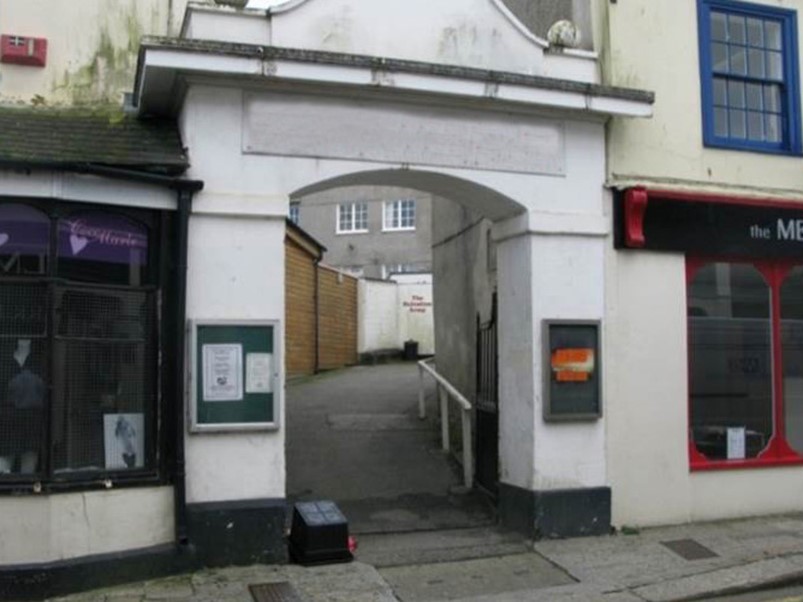 The entrance to the chapel in Kenwyn Street photographed when it being used by the Salvation Army
The entrance to the chapel in Kenwyn Street photographed when it being used by the Salvation Army
 (Photo: Jo Lewis)
(Photo: Jo Lewis)
The Wesleyan Society outgrew the Kenwyn Street chapel and it set out to find a plot of land on which a new chapel could be built. (The Kenwyn Street premises were subsequently used by a number of other denominations and organisations)
Finding a piece of land proved difficult due to “…strong prejudice against the people called Methodists”.
1829: Lord Vivian sold them a piece of land near the bottom of Pydar Street.
Philip Sambell, the deaf and dumb architect from Truro was appointed architect for the new chapel.
1830 Chapel
Large Wesleyan chapel ‘St Mary Clement’, Union Place, Truro by Philip Sambell plus schoolroom added 1887; remodelled and refitted late C19 by Silvanus Trevail. Built to replace an earlier ‘Preaching House’ in Kenwyn Street. Used for Methodist conferences since 1887. Granite ashlar front, otherwise local stone with granite dressings. Fine neo-Greek front (the best chapel front design in Cornwall) with pylon-shaped architraves to ground floor, round-arched windows with fanlight heads above. Evidence that there was probably originally a communion apse behind a pulpit (City Road style plan). Interior has panelled and ribbed ceiling and full gallery (incorporating original gallery structure underneath); good rostrum; Behind the rostrum is a shallow apse for the original communion area; original late C19 pitch-pine fittings throughout until recent re-ordering involving the removal of the ground-floor pews and the insertion of screens. Listed and illustrated in Stell (b1). (Cornwall Heritage Gateway)
1829: The ceremony of laying the first stone of the new Wesleyan Chapel, in the rear of the late Mr Vivian’s house in Pydar-street, Truro, will take place. (Royal Cornwall Gazette – Saturday 06 June 1829)
1829/1830: St Mary’s Wesleyan Chapel was built in Union Place. (SWChurches)
Historian, Ashley Rowe, wrote, “The work was undertaken in private contracts by ten of the builders of the town and in consequence of the full state of the building trade at the time was, though well done, cheaply built in 12 months”.
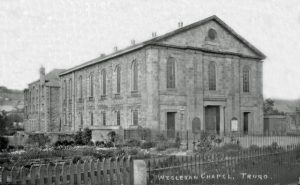
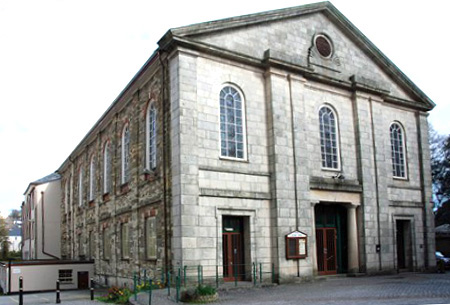 St Mary’s Wesleyan (Methodist) Chapel with its pedimented façade, bullseye window and arched windows
St Mary’s Wesleyan (Methodist) Chapel with its pedimented façade, bullseye window and arched windows
1830 – 2nd July: St Mary Clement Wesleyan Methodist Chapel opened.
1833: Truro class leaders James Saul and William Scott expelled by the Wesleyans and about 70 members left with them.
1866/67: Building lengthened by 23 feet and incorporated a Wesleyan day school. (Royal Cornwall Gazette – Thursday 26 September 1867)
1872: £3,000 in debt. Royal Cornwall Gazette – Saturday 20 July 1872
1884: Chapel remodelled and refitted – architect: Sylvanus Trevail.
1885: St. Mary’s Wesleyan Chapel, Truro re-opening services. “… All who know the chapel as it formerly was cannot fail to be struck by the transformation in its appearance. In the face of the old-fashioned and narrow and inconvenient box seats new pitch-pine pews, open at both ends, and of the most modern design, has been substituted, and it is intended that these shall all be cushioned. There are now four aisles in the body of the chapel instead of two, and these are wider than the old ones, an improvement effected at the sacrifice of upwards of 100 sittings, the present accommodation being for 1,600 persons. A new floor has been put down, the vestibules laid with Manton’s ornamental tales, and a completely new gallery erected, the front of which is composed of two kinds of wood— polished mahogany and pitch pine – the arrangement being that of panels, separated by pilasters. The panels are of mahogany, and other parts of pitch pine. The pilasters are fluted, with carved caps, each being of a distinctly different pattern. From these spring carved brackets, which support an ornamentally moulded book board. An increased projection is given to the front of the gallery so as to give additional foot space to the front seats. In place of the old wooden pillars which formerly supported the gallery, handsome iron ones, with ornamental caps, have been substituted. Instead of sombre whitewash the ceilings have been painted in light warm tint, relieved with some chaste stencilling of a deeper colour, and the whole of the interior walls have been similarly painted. The windows are to be filled with memorial windows of cathedral tinted rolled glass in geometrical designs, and, with two or three exceptions, the whole of these have already been given by private donors… The chapel is lighted principally by means of two of Siemens patent burners, suspended from the ceiling, while the spaces under the galleries will be illuminated by independent gas burners. Great attention has been paid to the matter of ventilation, and a system has been introduced which mechanically draws the vitiated air from the building and provides for a free supply of fresh air without draught. One of Grundy’s hot air apparatuses has been supplied for heating purposes, and five additional modes of exit have been provided, all the doors now opening outward – a great desideratum in case of fire or sudden panic. The architect was Mr. S Trevail, the contractor being Mr. W. Battershill, and the sub-contractors, Mr. W. Glasson for glazing and decorating, Messrs. M. and J. Clemens for masonry work Messrs. Cock and Son for plumber’s work, and Messrs. Smith and Son, of Birmingham, for the ornamental ironwork, &c. The handsome rostrum which has been constructed not having been erected, a temporary platform had to be improvised for the occasion, and this was set off to advantage by a choice collection of plants supplied from the nurseries of Mr. John Mitchinson. It should be mentioned that the organ has been thoroughly restored, revoiced, and considerably enlarged, several new stops having been added… New bellows have been placed in a room adjoining the organ loft, and these will shortly be worked by an hydraulic engine. The whole of this work has been admirably carried out by Messrs. Brewer and Co., organ builders, of Truro, and has given the utmost satisfaction. It may be stated that the cost of the renovations has to a large extent been promised or subscribed. The restoration of the chapel, however, is only part of the scheme which includes the erection of a large schoolroom at the rear of the building together with vestries and a new chapel in William-street. The re-opening services on Sunday were largely attended…” (Royal Cornwall Gazette – Friday 20 March 1885)
1886: Tenders invited for erection of assembly hall, classrooms, committee rooms and vestries. (The Cornish Telegraph Thursday 30 December 1886)
1895: New organ installed. (Royal Cornwall Gazette – Thursday 13 June 1895)
1932: The Wesleyan, Primitive Methodist and the United Methodist Church amalgamated to become the Methodist Church of Great Britain.
1932: Became St Mary’s Methodist Church. (SWChurches)
Part Truro Methodist Circuit. (SWChurches)
1967: Became St Mary-Clement following amalgamation with St Clement Street Methodist Church, the former United Methodist Church. (SWChurches)
 St Mary’s Methodist Chapel Caretaker’s house was to the right as you face the Church – demolished to make way for Marks and Spencer
St Mary’s Methodist Chapel Caretaker’s house was to the right as you face the Church – demolished to make way for Marks and Spencer
1984-1986: Papers, proposed re-development scheme, St Mary Clement Methodist Church, Truro. Report on options for church site and buildings, compiled by G F Saunders, Warmington & Co, chartered surveyors, London, March 1984; structural report on church building and Wesley Hall, compiled by S Howell, chartered surveyor, Truro, 1984; copy minutes, working party meetings, 1984-1985, and Finance and Property committee meeting, 12th March 1986; correspondence from church members, expressing support for plans and making suggestions, 1984-1986. (Kresen Kernow MRT/1373)
1984-1988: Correspondence, structural survey, St Mary Clement Methodist Church, Truro. Correspondence between S Howell, chartered surveyor, Truro and Mr M Almond, property secretary, St Mary Clement, regarding structural survey of church premises. Also report of structural survey of former Wesleyan Day School building, April 1987; quotations for re-roofing Wesley Hall and replacing pvc guttering with cast iron guttering, 1987-1988. (Kresen Kernow MRT/1374)
Aug 1992: Specification, alterations to Wesley Hall, St Mary Clement Methodist Church, Truro. Installation of lift and new staircase. Includes plans. Prepared by Hocking & Newton, architects, of Perranarworthal. (Kresen Kernow MRT/1376)
1996: Became Truro Methodist Church when joined by the congregation of St George’s Methodist Church (the premises of which closed). (SWChurches)
August 2000: A £400,000 refurbishment scheme begins. (A History of Truro by Viv and Bob Acton)
9th December 2000: Truro Methodist Church reopens. (A History of Truro by Viv and Bob Acton)
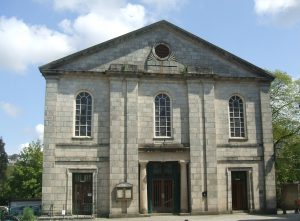 Truro Methodist Chapel (Photo: Alan Murton)
Truro Methodist Chapel (Photo: Alan Murton)
